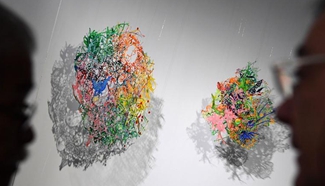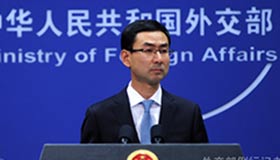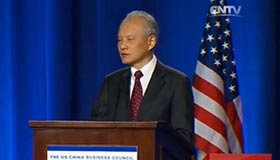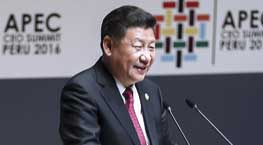SAN FRANCISCO, Dec. 15 (Xinhua) -- Researchers at Stanford University have used techniques adapted from artificial intelligence (AI) and machine learning to identify nearly two-dozen solid electrolytes that could someday replace the volatile liquids used in lithium-ion batteries.
"Electrolytes shuttle lithium ions back and forth between the battery's positive and negative electrodes," said Austin Sendek, a doctoral candidate in applied physics and first author on a paper published in the journal Energy & Environmental Science.
"Liquid electrolytes are cheap and conduct ions really well, but they can catch fire if the battery overheats or is short-circuited by puncturing," Sendek said.
Lithium-ion batteries are used in smartphones, laptops and other electronic devices. Battery fires led to the recent recall of nearly 2 million Samsung Galaxy Note7 smartphones, the latest in a series of highly publicized lithium-ion battery failures.
"The main advantage of solid electrolytes is stability," Sendek was quoted as saying in a news release from Stanford on Thursday. "Solids are far less likely to blow up or vaporize than organic solvents. They're also much more rigid and would make the battery structurally stronger."
To find an inexpensive solid material that performs as well as liquid electrolytes at room temperature and avoid randomly testing individual compounds in the process, the Stanford team turned to AI and machine learning to build predictive models from experimental data by training a computer algorithm to learn how to identify good and bad compounds, much like a facial-recognition algorithm learns to identify faces after seeing several examples.
"The number of known lithium-containing compounds is in the tens of thousands, the vast majority of which are untested," explained Sendek, who spent more than two years gathering all known data about solid compounds containing lithium. "Some of them may be excellent conductors."
The model used several criteria to screen promising materials, including stability, cost, abundance and their ability to conduct lithium ions and re-route electrons through the battery's circuit.
The researchers eventually plan to test the 21 materials in the laboratory to determine which are best suited for real-world conditions.
"Our approach has the potential to address many kinds of materials problems and increase the effectiveness of research investments in these areas," said Evan Reed, an assistant professor of materials science and engineering and a senior author on the paper.
"As the amount of data in the world increases and as computers improve, our ability to innovate is going to increase exponentially. Whether it's batteries, fuel cells or anything else, it' s a really exciting time to be in this field," he said.










